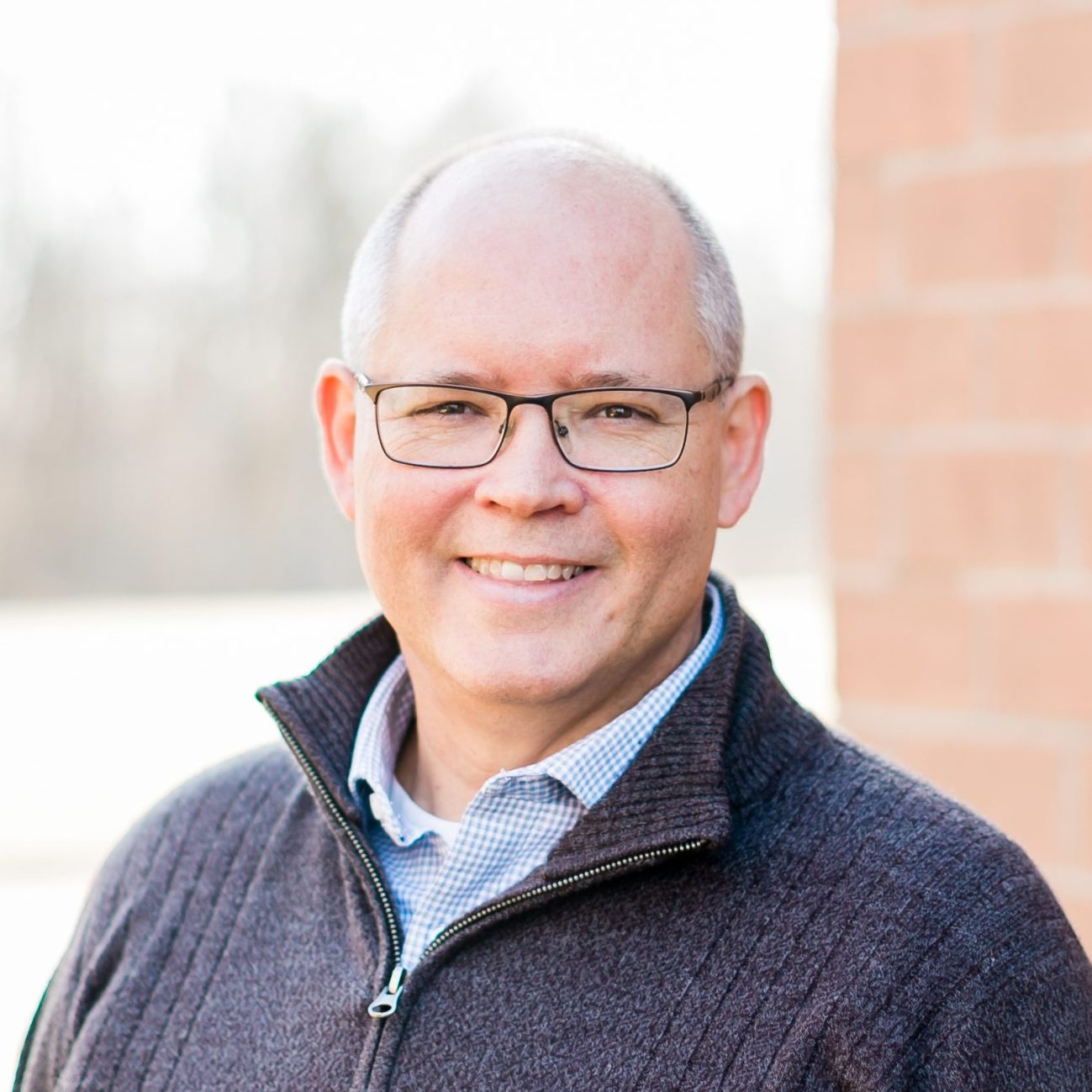Shift 4 – From More Hierarchy to More Missionaries- A Look At The Five Fold Ministry Test
In this ongoing series, we’re zeroing in on each of these six shifts. Our last three posts focused on shifts 1, 2 and 3. This week, longtime Exponential friend, pastor and author Rob Wegner helps us unpack shift 4. From More Hierarchy to More Missionaries looks at shift 4 through the lens of Ephesians chapter 4.
The Five Fold Ministry Test Origins
“So Christ himself gave the apostles, the prophets, the evangelists, the pastors and teachers, to equip his people for works of service, so that the body of Christ may be built up until we all reach unity in the faith and in the knowledge of the Son of God and become mature, attaining to the whole measure of the fullness of Christ.
“Then we will no longer be infants, tossed back and forth by the waves, and blown here and there by every wind of teaching and by the cunning and craftiness of people in their deceitful scheming. Instead, speaking the truth in love, we will grow to become in every respect the mature body of him who is the head, that is, Christ. From him the whole body, joined and held together by every supporting ligament, grows and builds itself up in love, as each part does its work” (Eph. 4:11-16).
The Fivefold Organization Plan Is Found in Jesus
In his letter to the Ephesians, the Apostle Paul describes for us how God has gifted the church to equip and mobilize His people for works of service for the purpose of building up the body of Christ. Jesus has provided the organization to unleash more—found in the five-fold gifting of APEST (apostles, prophets, evangelists, shepherds, teachers).
Without this important organizing system that Jesus laid out and defined for the Church, we will struggle to carry His fullness into every nook and cranny. Don’t miss that point:
This fivefold organization plan is the brainchild of Jesus, our Creator, and Savior.
Jesus embodies each gift (the ministry of Christ) as the head of His body, the Church, (the body of Christ) working toward the fullness of Christ. If we are missing one of these organizing systems as a local church, then we are lacking the fullness of Christ.
His plan illuminates and gives purpose to the unique roles and gifts He gives us in APEST.
Just as the body has systems that work together to allow for health and reproduction, Jesus gives organizing systems to His body for fullness, for more impact, and for the mobilization of EVERY member. Jesus has provided a mosaic of unique gifts within the five fold ministry test, also known as APEST.
Below are the functional strengths of each gift:
Five Fold Ministry Test: APEST Functional Strengths
• Pioneering, sending, extending, and entrepreneurial (Apostolic).
• Questioning systems of power, seeking justice, critiquing mission drift, and protecting the marginalized (Prophetic).
• Reaching out, including the seeker, proclaiming the Gospel, and Including new people (Evangelistic).
• Nurture, care, community and health (Shepherding).
• Sound doctrine, clear teaching, effective processes and systems, and strong values (Teaching).
Together, these gifts work hand-in-hand.
We must come together to see these five gifts as an organizing system in the body of Christ. We can no longer look at them as offices.
Jesus gets the privilege of decisively defining the Church, including these organizing systems found in Ephesians 4
As church leaders, we need to take this task of shaping the way people think about the church with utmost seriousness. Allowing Jesus to guide us, it is part of the leadership task to help our local churches see the Church as Jesus does.
So this shift is about recognizing the design for the Church and realizing that Jesus Himself, the Master Planner, has given us this organization via Paul. Once we’re on the same page for both of these truths, then the question becomes: How do I as a church leader move our church toward (or back) to this ancient design that engages and mobilizes every believer?
APEST as a Catalyst for Movement
As church leaders, we must take this task of shaping the way people think about the church with utmost seriousness. It’s part of our leadership task to help our local churches see the Church as Jesus does. We need Jesus to guide us in this.
We like what leadership author Max De Pree has so famously said: “The first job of a leader is to define reality.”
One of the key action points in Shift 4 is assessing where you and then using that baseline to project where you want to go. Ultimately, you want a church of missionaries on mission for Christ because ultimately, the Church was made to do more (the big idea here) both as individuals (the first three shifts) and as a collaborative body (shifts 3-6). The fivefold APEST gifts working together to activate every is also a critical mark of the church the way God designed it.
What does that look like practically? I know you’re probably thinking that’s an impossibility or a feat you don’t have the energy, time or resources to take on. Let us give you an example of a church that has taken this call seriously. This church is mobilizing everyday missionaries throughout their city.
The Underground Network
The Underground Church is located in Tampa Bay, Florida. It has seen the fruition of leader Brian Sanders’ conviction that people (not buildings, budgets or leaders) make up the church. The Underground is a fellowship of 150+ micro-churches. The church mobilizes, resources and empowers these groups. Individuals start and lead these fresh expressions of faith reaching into every corner of society. Ultimately, The Underground unleashes and empowers the priesthood of believers. (Watch the Case Study of Tampa Underground family of churches with Brian Sanders here.)
“One of the most critical things we’ve learned in all of this,” Sanders says, “this is that the priesthood of believers cannot be neglected. “
The Underground experiment grew out of the idea that everyone was both called and capable of discerning their call. The result is a diversity of missional expressions—creative and innovative beyond the imagination of any single leader.
“When people listen to their calling, niche ministries emerge,” Sanders says, “reaching into gaps we didn’t even know existed. Consider what we gain through this approach:
- The leaders are almost always indigenous.
- The ministry ideas are creative and (in many cases) utterly original.
What Shift 4 Looks Like in Your Church
We can look at specific characteristics when we talk aboutShift 4 in practical terms. As well, we can look at how it plays out in your leadership and church body,
In a church, hierarchy is alive and well when:
• The pastors and staff lead and define all the ministry, and the members support that work.
• New “ministries” of the church always have to “go up the chain” before anything can be done.
• The staff is evaluated by how effective their ministry is.
When you’re activating everyday missionaries, then:
• All members see their lives, where they live, work, learn and play, as their main ministry. In addition, they are excited to contribute to the shared ministry of the church through centralized programs.
•Your staff is evaluated by how effectively they are equipping others. This includes in their ministry to the body and their mission in the world.
• Members are launching new ministry initiatives all the time. They do this without the expectation that “the church” will do it for them, pay for it or centralize it. This is the epitome of what The Underground Network is doing.
“For us, a big part of what we do as leaders is to simply say, ‘yes.’ We have discovered that people have ideas,” Sanders says. “Most of us have something that God has embedded into our hearts or heads that we would like to see change, but we have simply not been encouraged or equipped to pursue it.
“Christian empowerment means helping people hear the voice of God as He speaks to them. Our leaders at the Underground are less about laying out some visionary master plan that moves people to action. If I move people by eloquence or my vision of the future, they become dependent on me as the engineer and keeper of that vision. If, on the other hand, the vision for their lives and the Kingdom coming through it originates from an encounter with God, they are dependent on Him for the renewal and vitality of that vision.”
Assessing Your Reality
Use the questions below to determine where you and your church are in this shift. From there, create a new paradigm for mobilizing everyday missionaries.
Is your church:
- organizing around the one or two of the functions described in Ephesians 4 listed here. Typically, only one or two rise to the top this way. This is because they are the couple that our pastor, leadership team or denomination are most comfortable with.
- primary dashboard is built around the ABC’s of the Church? (attendance, baptisms, and cash)
- only equipping disciples for one or two functions? Are these functions ones that your pastor, team or denomination are most passionate or comfortable?
Or are you:
- organizing around all five roles of APEST for the purpose of releasing the fullness of Jesus.
- building your dashboard around metrics for each of the organizing systems (APEST) in Ephesians 4.
- equipping every disciple to discovery their primary influencing style from Ephesians 4.
- Encouraging them to appreciate all the others as necessary.
Exponential has created a Made for More FREE resource kit to help your team take a deeper dive into these six shifts and equip you to apply them in your local context. Next time, we’ll unpack Shift 5: From More Programs to More Mission Fields.
Want to go deeper into this conversation? This fall, Exponential is bringing its “Made for More” live conference experience across the country. We will go to Washington, D.C., Southern California, the Bay Area, Chicago, Houston and New York City. For information about bringing your team to these regional events, go to exponential.org/events.








